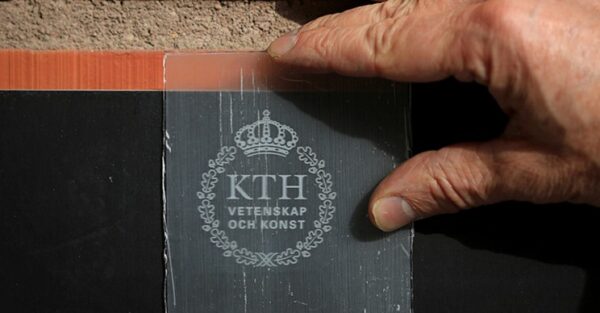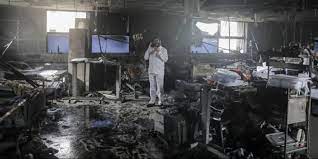In most cases, building an envelope failure, the actual cause is the failure of one component. While envelopes protect the building and its contents from the outside environment, many times failed to do their work, or perform poorly. Often the failure of building envelopes is the result of poor material techniques or poor design choices. However, even if the envelope is done correctly, the underlying cause may be a failure of one of the following critical systems.
Material techniques – Envelopes fail to achieve their goals because of the selection of improper materials. While the quality control requirements for many types of construction materials are standard, very few standards applied to envelopes. Many materials, including steel, disaster failure in large earthquakes and other emergencies because they are not suitable for strong impact protection. This failure can come from poor material engineering and poor design options.
Poor design choices – even when a well-designed structure, poorly designed often suffer from an envelope failure. Stitches, flanges, stitches, and sealed channel openings or weakens greatly increase the chances of failing envelopes. The combination of poor design decisions and poor material techniques often produce building envelopes that buckle and contribute.
Project management is poor – when the project is managed badly, it is common for them to face various failures, from the failure of envelopes to foundation failure. Managing projects from beginning to end can greatly reduce the risk of envelope failure. Poor project management plans can result in inadequate time or money spent on materials and inspections, lack of communication between vendors and suppliers, and so on. Bad project management can also cause loss of material or use of improper material, which can cause various envelopes failures.
Inappropriate installation – One main cause of building envelope failure is a bad installation. The wrong measurement, poor installation techniques, and other errors greatly increase the chances of failure. For example, less installed isolation often causes a failed building envelope. Poor installation techniques include using too many stitches or flashing, and misplacing flashing around the home structure. In addition, improper installations can also cause windows and doors to bend, make a gap, and other types of failure.
How to succeed in building a loss of envelope failure including knowing what you are doing and ensuring that you follow the steps needed for success. If you don’t have enough time to hire a professional to check your project or if you don’t trust the knowledge and expertise of experienced contractors, then these three fields might help you understand how to succeed in handling building envelopes. You may need to choose different materials at all or change the material that is little to avoid failure. If you don’t know how effectively handle failure in a certain area, then you might have to consider hiring someone who does it.












![Have you been encountering the [pii_email_2c5d108980d117c8ca52] error while trying to send or receive emails using your Outlook account, you’re not alone. It’s a standard Outlook error that sometimes gets triggered thanks to network connectivity issues. However, several other factors also can cause you to run into the said error. The good news is that you simply can troubleshoot this error by yourself. during this guide, we are getting to mention various factors that cause the PII error and what methods you'll utilize to repair it. So, with none further ado, let’s start . What Causes the [pii_email_2c5d108980d117c8ca52] Error in MS Outlook In general, the error occurs when MS Outlook fails to determine a secure reference to the e-mail server. But, as we mentioned earlier, there are many other reasons which will trigger this error also . a number of these reasons include: Your device isn't connected to a lively Internet connection Your Outlook profile has been damaged thanks to external factors There are incorrect antivirus configurations on your PC FIles on your POP3 server are damaged How to Fix [pii_email_2c5d108980d117c8ca52] Error So, now that you simply know what triggers the [pii_email_2c5d108980d117c8ca52] error in Outlook, let’s take a glance at the solutions that’ll assist you fix it. Also examine the way to fix outlook [pii_email_316cb5e2e59f1ce78052] error Check Your Internet Connection Since a poor network connection is that the primary explanation for the error, start by checking your Internet connection. confirm that your device has active Internet connectivity. you'll try accessing other online services to ascertain if the web is functioning or not. Change Antivirus Configurations If you've got recently installed an Antivirus program on your PC, it'd be configured to automatically scan emails. If that’s the case, the Antivirus will restrict the Outlook app from functioning properly. So, confirm to vary the Antivirus Configurations by disabling the “Email Scanning” feature. Reinstall/Update Outlook Reinstalling or updating Outlook to the newest version is yet one more effective thanks to fix the [pii_email_2c5d108980d117c8ca52] error. When you’ll reinstall the app, all the damaged temporary files are going to be deleted and therefore the root of the matter are going to be eliminated also . Clear Unnecessary Emails from Outlook Folder If your primary inbox has too many unnecessary emails, they’ll cause bandwidth issues. this is often the rationale it’s always advised to clear the unnecessary emails from your Outlook folders. While you’re at it, confirm to clear the Trash also . this may help your Outlook app to deliver optimal performance. Conclusion So, if you’ve been encountering the [pii_email_2c5d108980d117c8ca52] error for a short time now, the above-mentioned will assist you fix the matter . Follow these tricks and access your Outlook account with none hassle.](https://tomtomworks.com/wp-content/uploads/2021/09/How-to-fix-outlook-pii_email_2c5d108980d117c8ca52-er-200x200.webp)

![How To Fix [pii_email_71e6bcfa8a2bee2aa151] Erro](https://tomtomworks.com/wp-content/uploads/2021/09/How-To-Fix-pii_email_71e6bcfa8a2bee2aa151-Erro-200x200.jpg)




